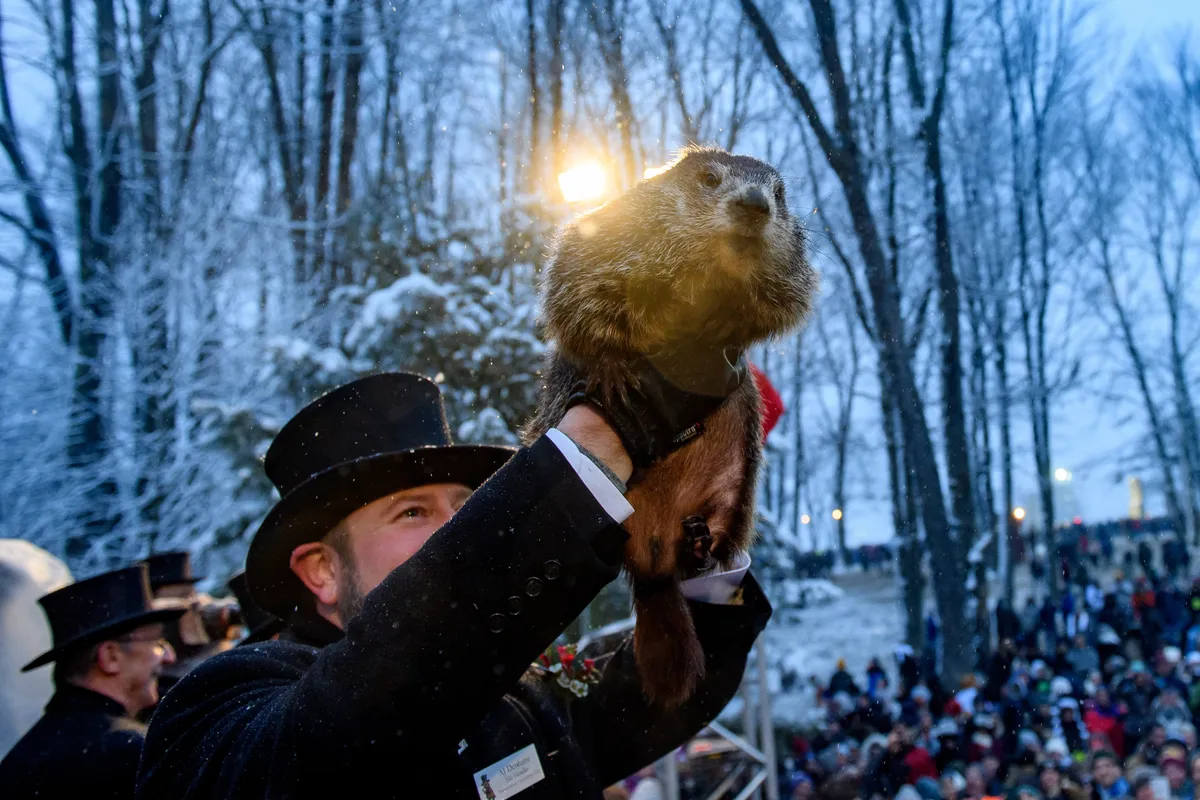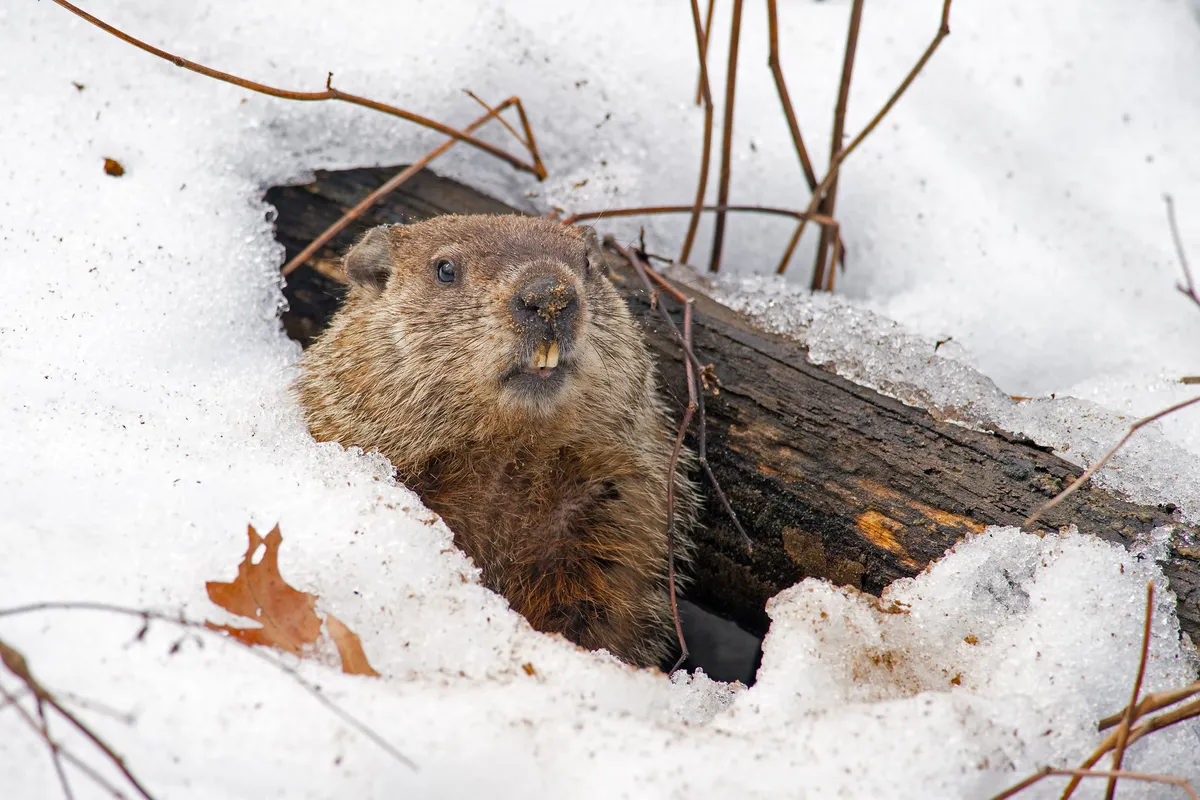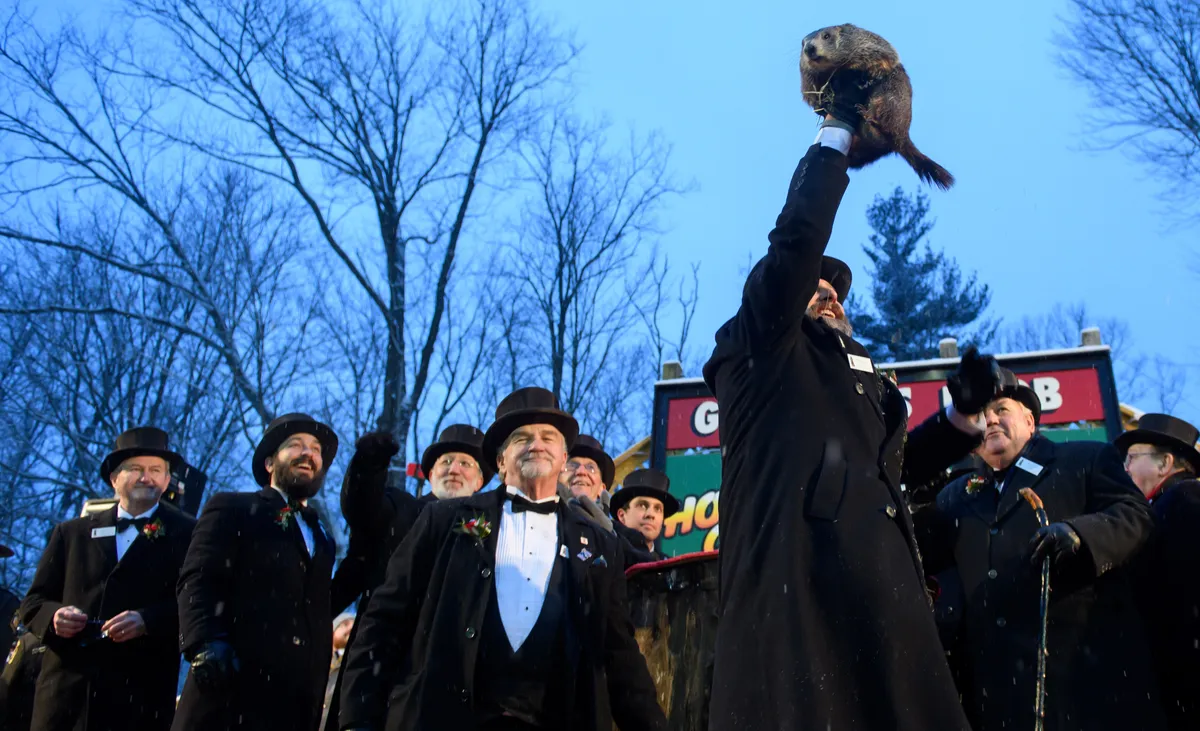Not just a classic movie starring Bill Murray, Groundhog Day is a real-life event that has been going since 1887. Steeped in tradition, the town of Punxsutawney in Pennsylvania has 2 February each year marked down as the day they'll find out if winter will continue or if they'll get an early spring.
However, there are no scientific instruments used to measure this or even any human estimation. Instead, the decision is left to Punxsutawney Phil - a legendary groundhog given the big job of predicting seasons.
What is Groundhog Day?
A long-lasting American tradition, Groundhog Day occurs every February. On the day, huge crowds gather to see a groundhog emerge from its home in nature. The theory goes that if this groundhog emerges seeing its shadow and then returns to its hole, it has predicted six more weeks of winter-like weather. Alternatively, if it does not see its shadow, it has predicted an early start to spring.
While this tradition started in the town of Punxsutawney, it has now spread across the US with multiple season-predicting groundhogs across the continent. The event has a lot of tradition that has continued to this day. An 'Inner Circle' of people organise the big day, wearing top hats and tuxedos and supposedly 'communicating' with the groundhogs to hear their big yearly prediction.

How accurate is the Groundhog Day prediction?
As amazing as it would be to have a groundhog that could predict weather and seasons, groundhogs unsurprisingly can't actually tell us when the season will change.
While the Inner Circle states a near perfect record, rough estimates would put the accuracy of Punxsutawney Phil's predictions at around 40 per centin the past 10-15 years - better to flip a coin instead.
The event requires a suspension of disbelief (avoidance of logic for the sake of enjoyment), allowing people to enjoy an 100+ year tradition. This behaviour often appears for event-predicting animals. In the past we've seen Paul the Octopus 'accurately' predicting the results of six World Cup games or Shaheen the Camel offering a 66 per cent accuracy for World Cup picks.
While these animals can't actually predict world sporting events or the change of seasons, there is some genuine science behind Phil's February emergence each year.
Yes, groundhogs do come out of their hibernation around this time but it's less to do with seasonal predictions and more to do with successfully mating. Groundhogs hibernate through the winter and emerge in February in preparation for mating in early March and birth in April. This gives newborn groundhogs enough time to grow in order to take advantage of food availability in May.
So if they don't mate until March, why do groundhogs emerge in early February? In time for Valentine's Day, groundhogs need to rekindle their romances. Socially, groundhogs are solitary for most of the year. Both male and females will maintain a feeding territory around their burrow and very rarely make contact in this time. February is a time to reestablish bonds before mating which means the famous Groundhog Day is closer connected to breeding than seasons.

The future of Groundhog Day could be AI
While groundhogs aren't actually able to predict seasons, the event continues to happen yearly with huge turnouts across the country. However it has come under controversy in recent years.
Two years ago, animal rights charity PETA campaigned to remove the groundhogs from the event replacing it with an AI animatronic groundhog. In a letter to the president of the Punxsutawney Groundhog Day, Ingrid Newkirk, President of PETA outlined fears of the animal's distress.
Newkirk suggests instead retiring the animal in exchange for an AI with a higher level of seasonal predictions. PETA claims this would reinvigorate interest in Groundhog Day, bringing attention to the technology.
"Today’s young people are born into a world of terabytes, and to them, watching a nocturnal rodent being pulled from a fake hole isn’t even worthy of a text message," said Ingrid Newkirk, president of PETA in a letter to the president of the Punxsutawney Groundhog Club.
"This is a generation whose members book rides on their smart phones and will never walk into a bank to deposit a check. Ignoring the nation’s fast-changing demographics might well prove the end of Groundhog Day."
An AI replacement could also be needed for this event due to the effects climate change could soon have on marmots and groundhogs. A lot of them occupy harsh environments with long, cold seasons without food. However, they have adapted to these cold harsh conditions and don't deal with high heat loads. Climate change has already moved groundhogs upslope of their lower elevation boundary and even threatens those that have adapted to warmer temperatures.

What about other weather-predicting folklore?
Groundhog Day is one of the best known weather-predicting traditions around, but there is actually loads of them throughout history with many still being used today.
Unsurprisingly, these pieces of weather lore have some key science behind them. Take the phrase 'red sky at night, shepherd's delight'. Traceable all the way back to the Bible, this phrase suggests that when you see a red sky it will be followed by clear weather. A particularly red sky is caused by high atmospheric pressure, where particles are more concentrated. Therefore, a red sunset usually means an area of high pressure (associated with clear sky) is approaching.
Other weather-predicting folklore include St Withins Day with the belief that if it rains on this day, it will rain for the next 40 days, or if it is dry it will be dry for 40 days. The French have a similar belief that if it rains on Candlemas (the day of purification for Mary 40 days after the birth of Jesus) then it will rain for another 40 or stay dry for 40 if there is no rain. Ironically, this falls on 2 February - the same day as Groundhog Day. That could mean some big weather predictions for one day.
Read more about animals:
